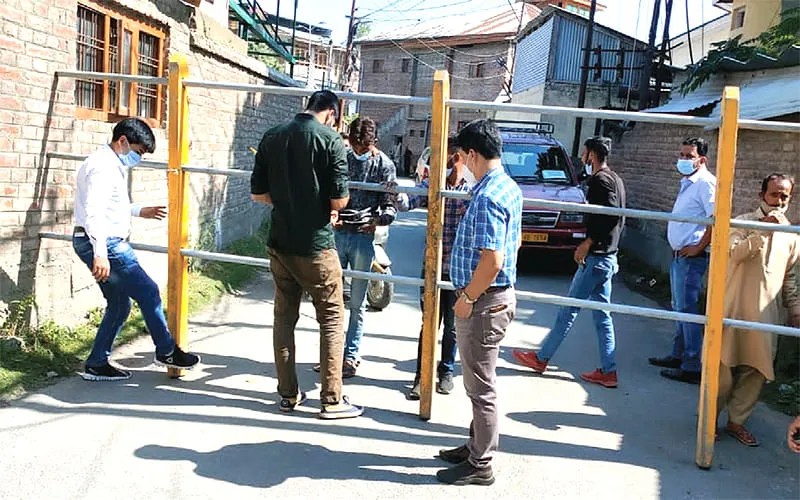Jammu: J&K government on Sunday asked the District Magistrates to “create as many Micro Containment Zones as needed and as per situation demand on ground, keeping in view the spike of (COVID) cases.”
Surveillance for ILI (influenza Like Illness) or SARI (Severe Acute Respiratory Illness) cases will be carried out in health facilities or outreach mobile units or through fever clinics in buffer zones.
State Executive Committee (SEC), in its new set of guidelines issued this evening, spelt it as the part of “Standard Operating Procedure (SOP) to be followed” for the micro containment zones.
Chief Secretary Arun Kumar Mehta, who is also the chairperson State Executive Committee (SEC) of J&K Department of Disaster Management, Relief, Rehabilitation and Reconstruction, directed that there would be intensive “house-to-house surveillance within the zone by surveillance teams formed for the purpose.”
“Testing shall be carried out as per prescribed protocol. The Home Secretary will monitor the enforcement of Covid Appropriate Behaviour (CAB) closely and will submit a report to the chairperson of the State Executive Committee (Chief Secretary) on a daily basis,” he further instructed.
The guidelines asked the DCs to keep active track of the positivity rates in their respective jurisdictions.
“Strict perimeter control (Micro-Containment Zone) shall be implemented for any unusual spike in positivity rate in any given locality or area. This shall be done to ensure no movement of people in or out of these zones, except for medical emergencies and for maintaining supply of essential goods and services,” it was directed.
As per the Standard Operating Procedure defined in the guidelines, the micro containment zone will be confined to either 50 meters or a single building and a buffer zone of 150 meters will be put in place between it (zone) and the rest of locality.
As per guidelines night curfew will continue to remain in force in all districts from 9 pm to 6 am but for those districts with positivity rate below 0.2 and weekly case load below 250 where it would be from 11 pm to 6 am.






